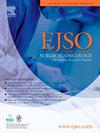Evaluation of the efficacy and safety of combined surgery with intraoperative radiotherapy and postoperative PVC for hepatocellular carcinoma with mPVTT
IF 3.5
2区 医学
Q2 ONCOLOGY
引用次数: 0
Abstract
Background
Hepatocellular carcinoma (HCC) accompanied by main portal vein tumor thrombosis (mPVTT) is associated with poor prognosis and limited treatment options. This study aimed to evaluate the efficacy and safety of a novel triple therapy approach combining surgery, intraoperative radiotherapy (IORT), and postoperative portal vein infusion chemotherapy (PVC) for HCC with mPVTT.
Methods
A retrospective analysis was conducted on 56 patients diagnosed with HCC and mPVTT. Patients were divided into two groups: the surgery-IORT-PVC group (n = 21) and the transcatheter arterial chemoembolization (TACE) combined with hepatic arterial infusion chemotherapy (HAIC) group (n = 35). Baseline characteristics, treatment procedures, postoperative complications, and survival outcomes were compared between the two groups.
Results
The surgery-IORT-PVC group (n = 21) demonstrated superior median overall survival (OS) (not reached vs. 7 months, P < 0.05 4.99(2.543–9.792)) and median progression-free survival (PFS) (not reached vs. 4 months, P < 0.05 5.268(2.765–10.03)) compared to the TACE-HAIC group (n = 35). Additional, the 1-year, 2-year, and 3-year OS (75.6 %, 60.5 %, 60.5 % vs 28.8 %, 8.2 %, 8.2 %) and PFS (73.3 %, 64.1 %, 64.1 % vs 9.5 %, 9.5 %, 9.5 %) of the surgery-IORT-PVC group significantly superior to that of the TACE-HAIC group. Multivariate analysis identified the treatment modality as an independent factor influencing both OS and PFS. Postoperative complications in the surgery-IORT-PVC group were manageable. No severe adverse events were reported in either group.
Conclusion
Overall, this novel treatment modality offers a potential effective therapy modality for patients with HCC and mPVTT who previously had limited therapeutic options.
求助全文
约1分钟内获得全文
求助全文
来源期刊

Ejso
医学-外科
CiteScore
6.40
自引率
2.60%
发文量
1148
审稿时长
41 days
期刊介绍:
JSO - European Journal of Surgical Oncology ("the Journal of Cancer Surgery") is the Official Journal of the European Society of Surgical Oncology and BASO ~ the Association for Cancer Surgery.
The EJSO aims to advance surgical oncology research and practice through the publication of original research articles, review articles, editorials, debates and correspondence.
 求助内容:
求助内容: 应助结果提醒方式:
应助结果提醒方式:


